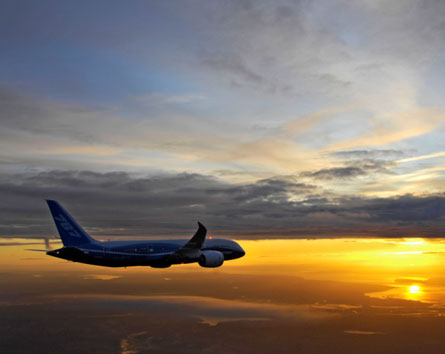After years of working to persuade airlines and airframers that moisture is a problem - too much of it between the aircraft's skins or not enough in the air passengers breathe - small Swedish technology company CTT Systems is on the verge of a breakthrough for its patient investors.
Previously, the Nyköping-based business - founded in 1991 and still employing just 40 people - sold its anti-condensation and humidifying kits solely through the aftermarket. But in 2005, its Zonal Drying system was selected by Boeing as 787 original equipment. "We must have been the smallest first-tier supplier they had ever had," says vice-president sales and marketing Ulf Liljenberg. Boeing was followed by Airbus, which will offer the system as an A350 XWB option.
Once volume production of the Dreamliner begins, output of the Zonal Drying systems (a widebody requires two 17kg/37lb units) should rise from the current two to 10 a month. CTT claims the technology can remove 200kg of water from a narrowbody and twice that on a widebody on a typical flight. The company also markets the benefits of removing lying water from an area of the aircraft packed with electrical wiring and corrodible parts.
 |
|---|
© Boeing787 is the original equipment breakthrough CTT needed |
The technology - licensed from Swedish dehumidification manufacturer Munters and separately patented by CTT's founders for aviation use - "blows" air from the crown of the aircraft, where condensation from passengers gathers. A slow-moving rotor impregnated with silica gel absorbs humidity and then releases dry air.
Convincing airlines they should tackle condensation has not been easy, concedes Liljenberg, still the company's sole salesman. Until the early 2000s stable oil prices meant fuel efficiency was not so important and for years Dutch airline Martinair was the company's only customer, retrofitting two Boeing 767s.
Pricier oil has helped CTT get its technology on 400 aircraft belonging to 44 operators. Lufthansa Technik holds the supplemental type certificate and the equipment can be installed at C check in about 150h for a narrowbody, 200h for a widebody.
HARD SALES
Liljenberg acknowledges an aftermarket-only business model is hard graft and the Boeing and Airbus agreements came as a relief: "Selling as a retrofit is extremely difficult. Some [airlines] don't even realise they have a condensation problem."
CTT has also made inroads with its second product, Cair, which works in reverse to Zonal Drying by pumping more humid air into the passenger cabin. While the 100g (3.5oz) of water vapour that each passenger exhales every hour condenses in the crown, a lack of humidity in the cabin causes them to dehydrate - a cause of jet lag and discomfort.
Cair works in tandem with the drying system, using a cold evaporation principle to push humidified fresh air into the cabin, increasing relative humidity from 5% to more than 20%. Cair has been installed on 35 Boeing Business Jets and Airbus and Boeing will offer the technology as an option on the A380 crew rest area and the 787 cockpit and crew rest compartment. At the Aircraft Interiors show in Hamburg last month, Lufthansa announced it will install the equipment in the first-class cabins of its A380s.
So far, the technology is set to be enjoyed by crew and premium passengers only. Liljenberg admits that "we are selling a comfort case which is not always easy to justify in terms of return on investment". CTT's positioning for Cair focuses on improved long-haul comfort as "a strategic marketing tool in parity with in-flight entertainment".
While IFE was seen for a long time as nice-to-have, it is now often the benchmark with which many passengers choose their long-haul airline, says Liljenberg. He hopes that more breathable cabin air will be seen in the same way. "I fly a lot myself and I get chatting to fellow passengers about what we do, and without exception people say it's a great idea," he says. "I strongly believe increased cabin humidity will be a standard fit in future aircraft."
Breathing easier will be CTT's investors. The company has traded on the Stockholm stock market since 1997 and made its first profit in 2009. "We have had very supportive shareholders," says Liljenberg, a former airline executive who sold his wind turbine start-up in 2002 to join CTT because "I was triggered by the exciting possibilities" of the technology. "Now it is hopefully time for payback."
Source: Flight International



















